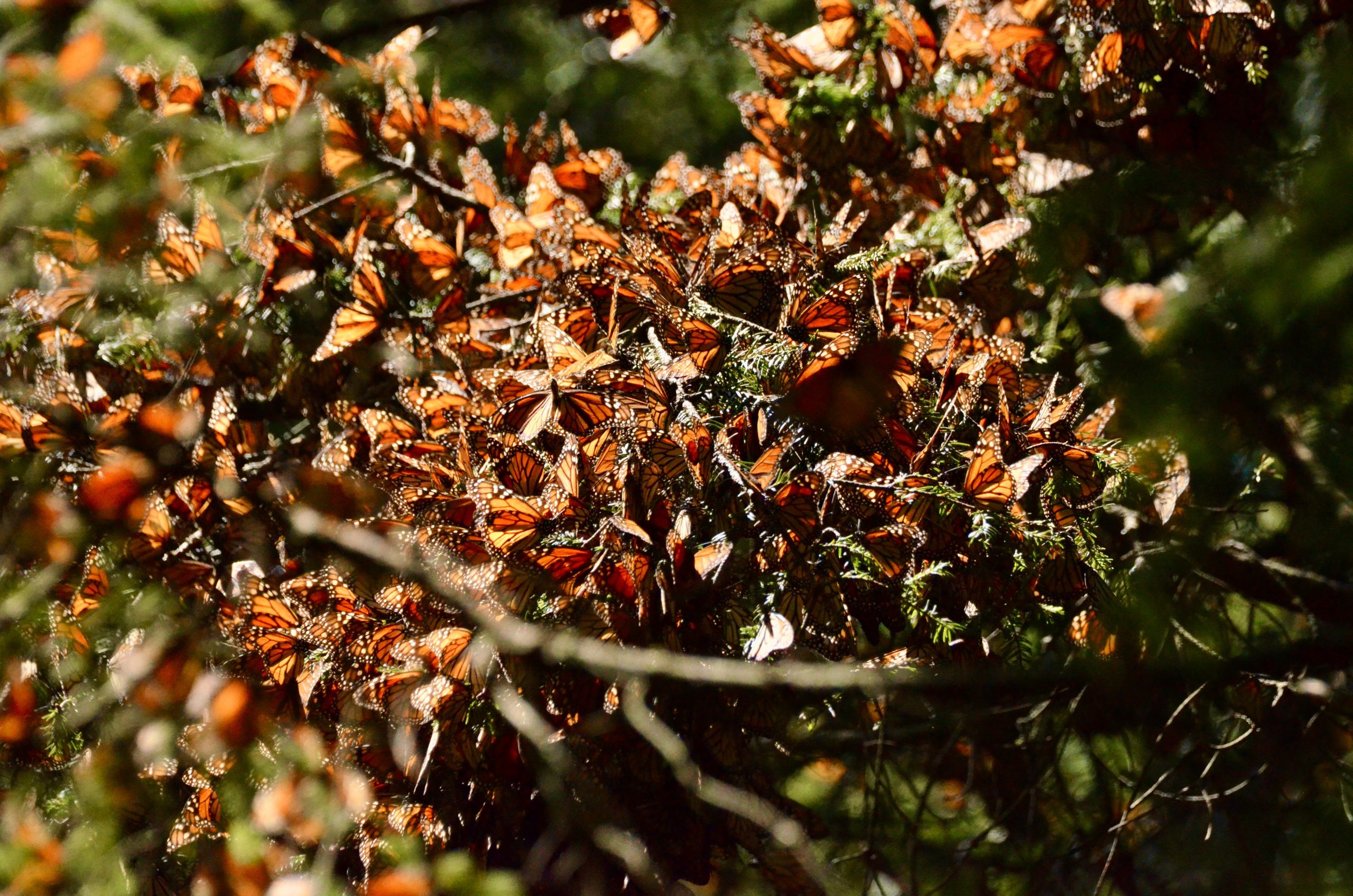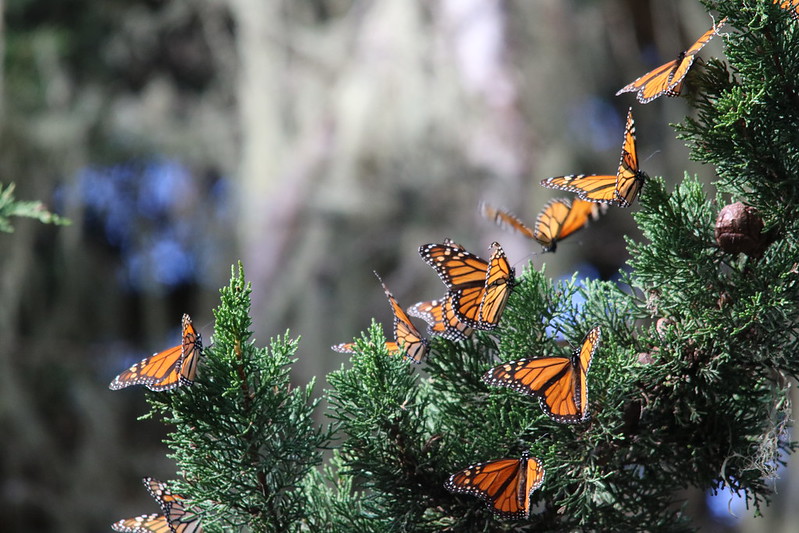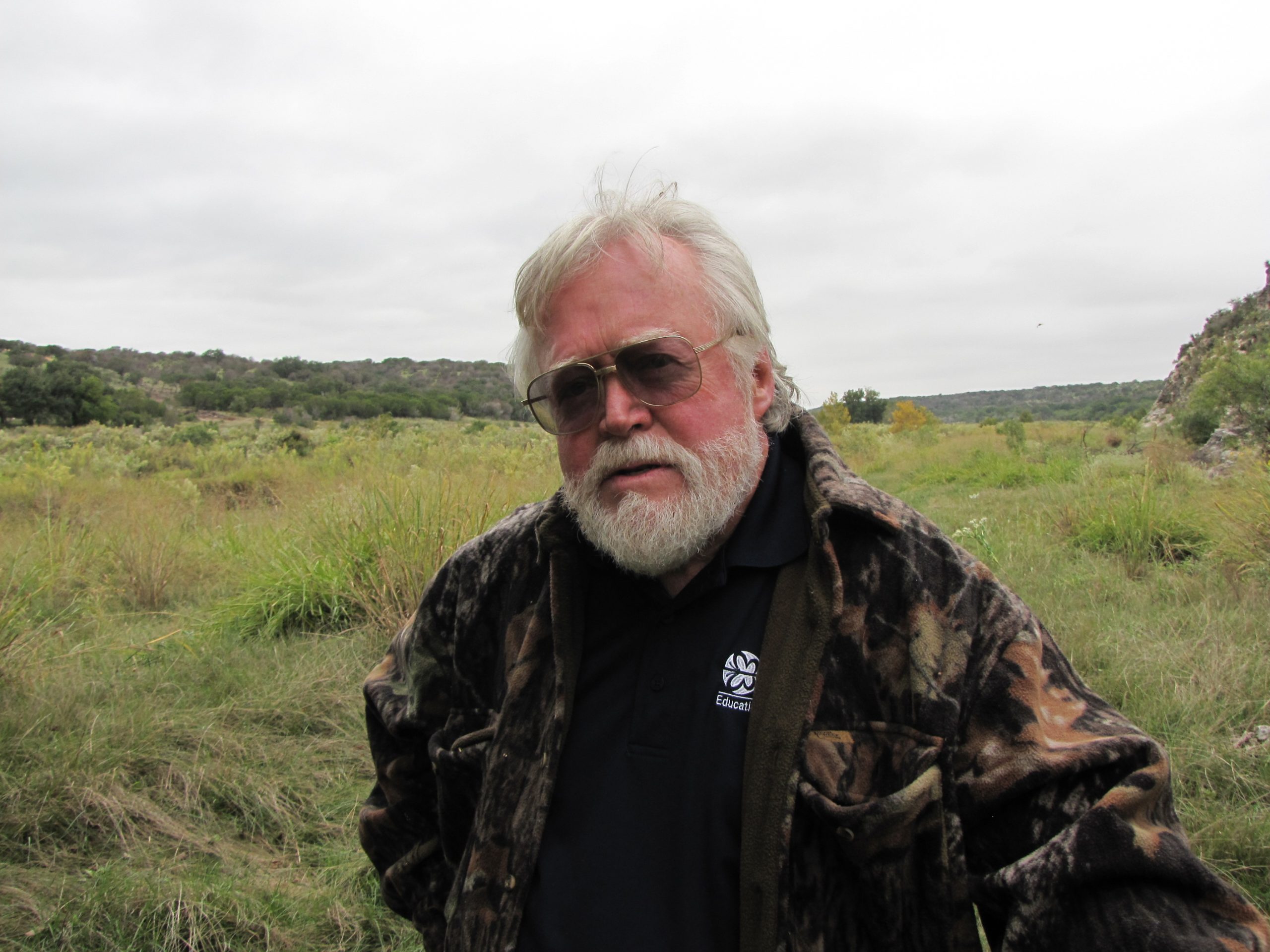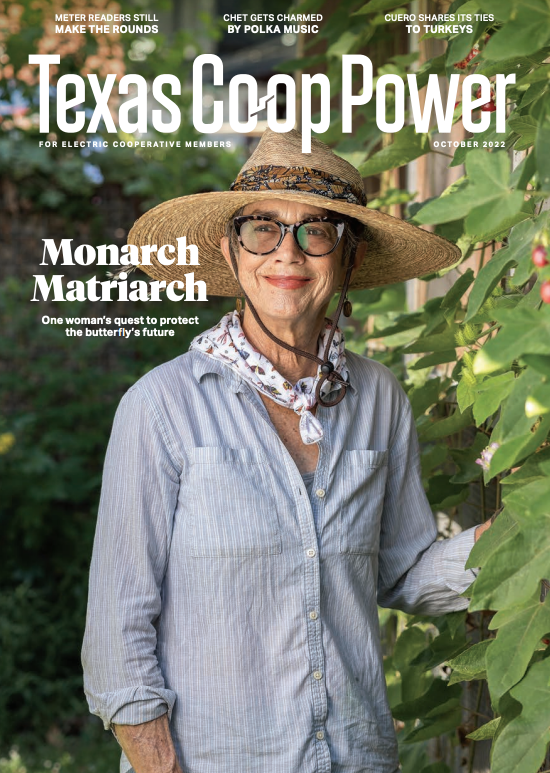It’s been a wild ride this year–up and down and all around. Butterflies and pollinators endured crazy times. A long drought, extreme heat, and epic freezes in places they don’t usually happen. Wildfires and floods and strange listings and prognoses for their populations. Here’s a look back on a couple of the top monarch butterfly and pollinator stories for the year, in case you missed them.
IUCN declares monarch butterflies “endangered,” adds them to red list
The biggest story of 2022 had to be the listing of the monarch butterfly as “endangered” by the International Union for the Conservation of Nature (IUCN). Citing habitat destruction and climate change, the conservation organization, based in Sweden and comprised of government agencies and NGOs from around the world, put the migrating monarch butterfly on its red list in July of this year.

Clusters of monarch butterflies at Piedra Herrada sanctuary in Mexico in March of 2022. Photo by Verónica Prida
The news resulted in a whirlwind of confusion for monarch butterfly aficionados. As written previously, the eastern migratory population had just enjoyed two years of rebounding. Just in May, news broke that the eastern migratory monarch population enjoyed a 35% increase this year over last. In January, conservationists announced that the number of California’s monarchs, which move up and down the Pacific Coast, vaulted more than 12,000% in 2021.
Western monarch butterfly population surges in California
Just as we were processing the reality that monarchs are at great risk, the California population appears to have boomed–again–in 2022.
“Unexpected monarch butterfly explosion hits California’s Pismo Beach grove,” read the December 6 headline in SF Gate, an online news site that covers the Bay area. Phys.org, a science news portal, reported on December 22 that San Luis Obispo count saw the highest number of monarch butterflies in more than 20 years.”
The article relayed that more than 129,000 western monarch butterflies had been counted in San Luis Obispo county alone by Xerces Society for Invertebrate Conservation employees and volunteers during the organizations annual Western Monarch Thanksgiving Count.

Western monarchs overwintering on a conifer tree on the California coast. Photo credit to Joanna Gilkeson/US Fish and Wildlife Service.
That’s the largest number of butterflies counted in the county in more than two decades, according to the Xerces Society’s data. In 1998 about 182,000 were counted. Other counties contributed to the annual butterfly count, which as of December 19 totaled more than 300,000, according to the Merced County Times.
Orley “Chip” Taylor announces his retirement from Monarch Watch, endows the organization with Apple stock
The padrino of citizen science and monarch butterfly tagging Dr. Orley “Chip” Taylor announced his retirement from Monarch Watch in September. Taylor has led the organization he founded more than 30 years ago and at the age of 85, decided it was time to hand over the reigns.
As a parting gift, he and his wife, Toni, gifted $1.4 million in Apple stock to endow the Monarch Watch Chip and Toni Taylor Professorship, a faculty position at the University of Kansas dedicated to overseeing the science of Monarch Watch.

Monarch Watch founder Dr. Chip Taylor on the Llano River in the Texas Hill Country in 2012. Photo by Monika Maeckle
It will be interesting to see who inherits Taylor’s hefty mantle and what changes ensue in the citizen science organization, which oversees conservation and habitat restoration initiatives as well as the popular citizen science tagging program. More apps in our future to replace the retro stickers we use today? We shall see.
Lawns are out, wildlife friendly landscapes are in
We’ve been writing about this for a while now, thus it was especially heartening to read this story in the New York Times earlier this month: “They fought the Lawn, And the Lawn’s Done.”
The story details how a couple sued a homeowners’ association in Maryland after being pressured to address the “mess of a jungle” their native landscape was creating. After $60,000 in legal fees, they won and a new law was passed in Maryland–the first in the country to limit homeowner association control over eco-friendly yards.
The story is familiar to pollinator advocates, butterfly enthusiasts and native plant promoters who have battled HOAs and pristine lawn fans for at least a decade. The new law ratifies the reality that it’s time to dump the water guzzling grass and install plants that belong where you put them and provide ecosystem services. Beauty is no longer enough.

Pollinators welcome: goldenrod, purple aster, cowpen daisies, lantanas and other lates season blooms create a pollinator pitstop in downtown San Antonio. Photo by Monika Maeckle
Doug Tallamy and others have promoted this point of view for years. A local story published on this site presented how a particular homeowners’ association insisted a family get rid of the “weeds” that were sullying the curb appeal when in fact the “weeds” were bluebonnets, the Texas State flower! It’s gratifying to see this ethos going mainstream.
Read the New York Times story here, and cheer.
Have you registered for our pollinator habitat initiative yet? If not, why not? Check it out.
My unplanned stint as a pollinator promoting cover girl
I never set out to be a cover girl, but writer Laura Tolley made it happen. The journalist tracked me down and wrote about my evolution in pollinator advocacy and the beginnings of the Monarch Butterfly and Pollinator Festival I started in 2016. The Festival celebrated it’s lucky seventh year in October of this year.
The story, titled “Funnel Vision: how one woman is earnestly spreading the word about monarch migrations through Texas,” was accompanied by photojournalist Julia Robinson‘s stellar photos. It made the cover of the October edition of Texas Coop Magazine, a Texas staple that hits more than one million homes each month, all of which are serviced by the network of electrical coops that serve much of the state.
Got a favorite pollinator/monarch butterfly news story that you ran across in 2022? Leave us a link in the comments below. And Happy New Year to all!
TOP PHOTO: Honeybee on Turk’s cap Photo by Monika Maeckle
Related posts:
- Almost there! Pollinator habitat initiative closing in on goal of 1,000 by year’s end
- 300for300 pollinator initiative: 500 habitats by 2020?
- Popularity of pollinator gardens growing in areas prone to drought
- Planting a butterfly garden? Here’s tips on how to do it
- Mostly native butterfly garden outperforms lawn every time
- Downtown River walk plot converts to pollinator garden, creature haven
- Converting your Lawn to a Butterfly Garden
- San Antonio becomes first National Wildlife Federation Monarch Champion city
Like what you’re reading? Don’t miss a single article from the Texas Butterfly Ranch–subscribe at this link. Also, like us on Facebook, follow us on Twitter, @monikam or on Instagram.



Hello Monica,
We’ve met but you may not remember me; I helped to produce that first Solar Mural with artwork by Cruz Ortiz of a Monarch Butterfly. I plan to be at the Monarch Butterfly Biosphere Reserve at the end of January and I wondered if there was anything you might need from there—photos, etc. Let me know… I am in Chiapas right now…